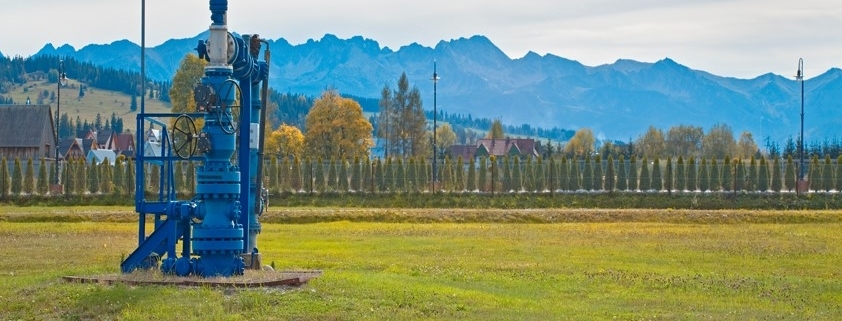Country Update – Poland
by Michal Kruszewski (GZB)
In General
Poland is one of the central European countries with high geothermal potential and strong interests from government as well as local authorities. The country has only low-enthalpy resources, connected in most cases with the Mesozoic sedimentary formations. Six geothermal district heating plants are currently in operation in Poland i.e. Podhale region since 1994, Pyrzyce since 1996, Mszczonów since 2000, Uniejów since 2001, Poddębice since 2012 and Stargard since 2012, with total installed capacity of 76 MWth and heat production of 227 GWh. The most attractive direct applications of geothermal energy in Poland are space heating, balneotherapy, recreational, aquaculture and other minor uses. Geothermal waters with temperatures ranging from 20 to 100°C and flow rate of up to 150 l/s are being produced from geothermal wells with total depths between 1 to 3 km. Most of deep geothermal installations are based on doublet systems, with an exception of Mszczonów and Poddębice district heating plants, where thermal water mineralization is below 500 mg/l. Ground Source Heat Pump (GSHP) industry, established in Poland several years ago, is in constant development and experienced immense progress since 2013, with 500 MWth installed capacity and 714 GMh of heat production as for 2015.
News
At the end of September 2017 local authorities of Szaflary, Koło, Lądek Zdrój, Sochaczew and Sieradz municipalities received large subsidies (in total 46 mln EUR) from Polish National Fund for Environmental Protection and Water Management (NFOŚiGW) in order to investigate and explore geothermal resources in various areas in Poland. The deepest planned exploratory well Bańska PGP-4 will be drilled in Szaflary (southern Poland) municipality with target depth of 5.3 km. The well will investigate potential resources of geothermal waters in Podhale region. It will be the fourth production well in the area and the deepest in the field. Well temperatures are expected to reach temperature of 130°C, which is around 40°C higher than temperatures from the typical wells in area drilled to 3 km depth. Such temperature will allow not only for district heating but also create possibility of electricity production, which was not yet investigated in Poland. The new well is planned to start production by the end of November 2020 and will also provide new insights about geology and reservoir conditions below current production intervals. The well will the deepest geothermal well in Poland and one of the deepest in Europe.

Fig. 1. Wellhead of geothermal well in southern Poland in Podhale area (source: geotermia.pl)
Another geothermal investment is planned in Lądek-Zdrój (south-western Poland) municipality. A 2.5 km deep exploratory well will be used for district heating, balneotherapy, bathing and snow melting purposes in cascade application. It is expected that geothermal energy development in southern Poland will help to mitigate the smog and air pollution problem, which is caused by outdated heating systems, heavy traffic and economy’s dependence on coal.
One of the shallowest wells is also planned in the area of Sochaczew (central Poland) with final depth of 1.4 km for district heating purposes. Another exploratory well GT-1 is expected to be drilled in municipality of Koło, which is regarded as one of the most promising geothermal areas in Poland with plans for geothermal power plant, and Sieradz (both located in central Poland). Production well in municipality of Sieradz is planned to provide heat to around 20 thousand inhabitants in the nearby area. Final well depth would amount to 1.5 km. Such depth will allow for producing thermal water with temperatures of around 65°C and flow rate of approximately 34 l/s. Drilling operations are scheduled to be finished by the end of November 2018.
In September 2017, new directional “S”-type well GT-1 bis was drilled and connected to the Pyrzyce geothermal district heating plant, which now owns 5 wells, in north-western Poland with its final depth of 1.8 km, geothermal water temperature of 66°C and flow rate of approximately 56 l/s.
Great part of the funds from NFOŚiGW were received for establishing geothermal heating plant in city of Toruń (northern Poland). Attempts to create geothermal heating plant there were kick-started in 2008, however failed to receive any subsidies from polish government that time.
Future
Poland is the motherland of petroleum industry, where in 1853 first oil well was drilled in Bóbrka (southern Poland) municipality, near Krosno and year later first oil refinery was established. In 1900, Poland was the third biggest oil producer in the world. Currently, many of these oil and natural gas wells are abandoned (or/and negative) and located nearby residential or industrial areas. This creates perfect opportunity to extract geothermal heat from already drilled petroleum wells. First project of such kind was attempted in Sucha Beskidzka (southern Poland), where well Jachówka-2K, primarily created for oil production, was drilled to final depth of approximately 4.3 km. Only small tributaries of natural gas were discovered and well was reconstructed for borehole heat exchanger. Due to poor insulation of inner column, project did not achieved satisfactory results. Currently, research works are ongoing in order to improve insulation properties of inner column and increase efficiency of borehole heat exchangers. In the future such technology, which currently is being look at in countries such as Canada, might provide great deal of renewable heat to polish inhabitants and help to significantly improve air quality.
Poland has also contributed to many European programs on various geothermal aspects from shallow to deep geothermal, in order to exchange experience and learn from other, more advanced in geothermal heat and electricity production countries such as Iceland. The outcome of such projects shall enable for polish geothermal industry to develop and also draw attention of the public. The trend of progress in geothermal heat pump industry is scheduled to continue in very near future in Poland with much more bigger scale projects, with multiple borehole heat exchanger installations, as well as smaller scale investments in private housing. As it was mentioned before, Poland has also great potential for lunching first geothermal power generation plants in areas such as Koło or Szaflary.
Author Contact: michal.kruszewski@hs-bochum.de



